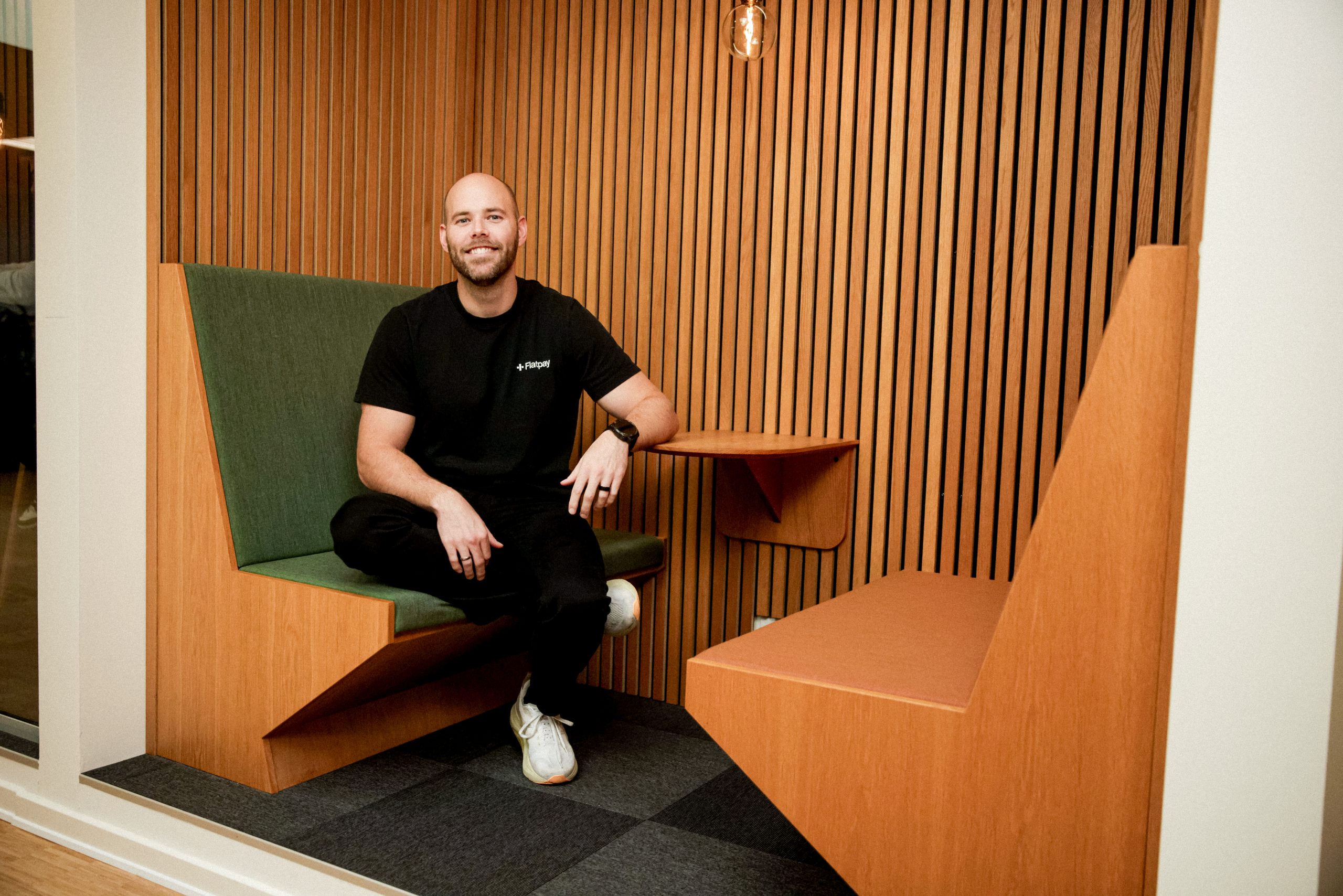
Copenhagen-based fintech innovator FlatPay has ascended to the coveted status of a European unicorn, signifying a valuation exceeding $1 billion. This rapid rise marks a significant milestone for the Danish startup, which specializes in streamlining card payments and point-of-sale (POS) systems for small and medium-sized businesses (SMBs) across the continent. The achievement underscores the dynamic evolution of Europe’s financial technology sector, where companies are increasingly finding success by addressing the unique needs of often-overlooked segments.
The Unicorn Phenomenon in European Fintech
The term "unicorn" refers to privately held startup companies valued at over $1 billion. Coined in 2013 by venture capitalist Aileen Lee, it initially highlighted the rarity of such enterprises. However, in recent years, particularly within the robust European fintech ecosystem, unicorn births have become more frequent, signaling a maturing and highly competitive landscape. Europe has emerged as a global hub for fintech innovation, driven by a combination of factors including a large, digitally savvy population, supportive regulatory frameworks like PSD2 (Payment Services Directive 2) promoting open banking, and a diverse economic environment fostering specialized solutions.
The payment processing sector, in particular, has witnessed explosive growth and innovation. Traditionally dominated by established banks and a few large global players, the market has been disrupted by nimble fintechs offering more agile, cost-effective, and user-friendly solutions. Companies like Adyen, a Dutch payment processing giant, have set a high bar for scale and market penetration, demonstrating the immense potential for specialized payment platforms. FlatPay’s entry into this elite group suggests a successful strategy for carving out a distinct niche amidst fierce competition.
FlatPay’s Rapid Ascent and Distinctive Strategy
FlatPay’s journey to a €1.5 billion ($1.75 billion) valuation in just three years is a testament to its aggressive market penetration and a business model sharply focused on simplicity and direct customer engagement. The company’s core offering revolves around providing card terminals and point-of-sale systems to small merchants at a straightforward, flat transaction rate. This approach directly challenges the often complex and opaque fee structures prevalent in the industry, which can be a significant pain point for small businesses with limited resources for financial analysis.
The market for small and medium-sized businesses is not just large but critical to the European economy, accounting for an estimated 99% of all enterprises. Despite their collective economic power, these businesses often face disproportionate challenges in accessing modern, efficient financial tools. Many established payment providers tend to prioritize larger corporate clients, leaving SMBs with less tailored or more expensive options. FlatPay identified this gap and capitalized on it, leading to remarkable growth in its customer base. From approximately 7,000 customers in April 2024, the startup now proudly serves around 60,000 merchants, demonstrating an exponential increase in adoption.
Prioritizing Recurring Revenue and Ambitious Growth Targets
While achieving unicorn status is a significant validation of market potential and investor confidence, CEO and co-founder Sander Janca-Jensen emphasizes that the company’s internal focus extends beyond valuation metrics to sustainable, recurring revenue streams. FlatPay reported crossing €100 million (approximately $116 million) in Annual Recurring Revenue (ARR) in October, with this figure expanding by nearly €1 million ($1.16 million) daily. This metric, which reflects the predictable revenue generated from subscriptions or recurring services, is a crucial indicator of a software company’s long-term health and scalability.
Looking ahead, FlatPay has set an ambitious target of growing its ARR by another 300% by 2026, aiming to conclude that year with between €400 million and €500 million in ARR. Such aggressive growth requires substantial capital investment, particularly for a company that, while rapidly expanding, is still operating at a loss. To fuel this expansion, FlatPay recently secured €145 million (approximately $169 million) in its latest funding round. This significant capital injection was backed by prominent investors including AVP Growth and Smash Capital, alongside existing investor Dawn Capital, which had previously led the company’s €47 million Series B round. Notably, German soccer star Mario Götze also participated in the earlier funding round, highlighting the increasing crossover appeal of high-growth tech investments among diverse investor groups.
The "Human Touch" Differentiator in a Digital Age
Perhaps the most distinctive and impactful aspect of FlatPay’s strategy is its commitment to a highly personalized, in-person customer acquisition model. In an era dominated by digital self-service and AI-driven automation, FlatPay deploys a large team of sales representatives – affectionately called "flatpayers" – who visit small business owners directly. These representatives arrive equipped with demo kits, complete with card terminals and clear, transparent pricing information presented with "pen and paper," offering instant demonstrations and immediate onboarding.
This hands-on approach stems from the company’s core hypothesis: small business owners, often overwhelmed by the complexities of running their operations, are actively seeking simpler, more transparent solutions, even if their existing payment systems are functional but overpriced or insufficient. The direct interaction allows FlatPay to build trust, explain its value proposition clearly, and offer a "ready-to-go" solution that minimizes friction for the merchant. While this method inherently leads to higher customer acquisition costs compared to purely digital models, Janca-Jensen contends that the resulting demand generation and rapid customer onboarding far outweigh these expenses. The tangible, face-to-face engagement fosters stronger relationships, potentially leading to higher customer loyalty and lower churn rates in the long run. Investors, despite the current AI-centric investment climate, have seemingly recognized the strategic value of this high-touch approach, given the impressive growth figures.
Geographic Expansion and Workforce Growth
FlatPay’s newly raised capital is earmarked not only for sustaining growth in its existing markets—Denmark, Finland, France, Germany, Italy, and the U.K.—but also for venturing into one or two new European territories next year. While specific new markets remain undisclosed, industry speculation, fueled by job postings, points to the Netherlands as a likely candidate. This strategic geographic expansion is critical for a European fintech aiming for continental dominance, requiring careful navigation of diverse regulatory landscapes and cultural business practices.
The company’s ambitious growth trajectory extends to its workforce. Currently employing 1,500 "flatpayers," FlatPay plans to double its headcount by the end of next year. This aggressive hiring strategy is directly linked to its in-person sales model, as scaling customer acquisition inherently demands a proportional increase in human capital. The company has publicly stated its aim to achieve a tenfold increase in both revenue and headcount by 2029, a bold declaration that underscores the symbiotic relationship between its sales strategy and operational scaling.
Navigating a Competitive and Evolving Market
FlatPay operates within a fiercely competitive payments ecosystem. Beyond large established players like Adyen, the company contends with global fintech giants such as PayPal and Stripe, as well as European competitors like SumUp, which also target SMBs. Additionally, legacy banking institutions continue to evolve their offerings, and new entrants frequently emerge, sometimes focusing on specific sectors like hospitality. FlatPay’s differentiation through a flat-rate model and direct sales is its primary weapon against these diverse rivals.
The company is not entirely foregoing technological innovation. While prioritizing human interaction, FlatPay integrates artificial intelligence into its operations, utilizing AI for real-time features and experimenting with voice AI agents for customer support. This balanced approach suggests a recognition that technology can augment, rather than replace, the human element in specific contexts.
Looking ahead, FlatPay plans to expand its fintech offerings beyond pure payment processing. The company aims to introduce a comprehensive banking suite, potentially including business cards and accounts. This move positions FlatPay as a broader financial services provider, aspiring to become a one-stop shop for SMBs’ financial needs. CEO Janca-Jensen describes this as a strategy of "eating the elephant one bite at a time," signifying a gradual and modular introduction of new services to avoid overwhelming small business owners, who often prefer incremental changes to their financial infrastructure.
Analytical Commentary: Challenges and Opportunities Ahead
FlatPay’s rapid rise is undoubtedly impressive, yet the path ahead presents both significant opportunities and inherent challenges. The sustainability of its high-touch, in-person customer acquisition model will be continuously scrutinized. While effective for initial market penetration and building trust, scaling this model across numerous diverse European markets while maintaining cost efficiency and quality of service is a complex undertaking. The constant need for capital to fund unprofitability, even amidst high ARR growth, will also require ongoing investor confidence.
Moreover, the competitive landscape is ever-evolving. Larger players could potentially mimic FlatPay’s successful strategies or leverage their scale to offer even more aggressive pricing. Regulatory complexities across multiple European Union and non-EU countries will also demand significant resources for compliance and adaptation. However, FlatPay’s deep understanding of the SMB segment, coupled with its proven ability to execute a distinctive sales strategy, positions it strongly. If it can successfully integrate its planned banking suite and maintain its customer-centric approach, FlatPay has the potential to become a foundational financial partner for millions of small businesses across Europe, cementing its place as a formidable force in the global fintech arena.




